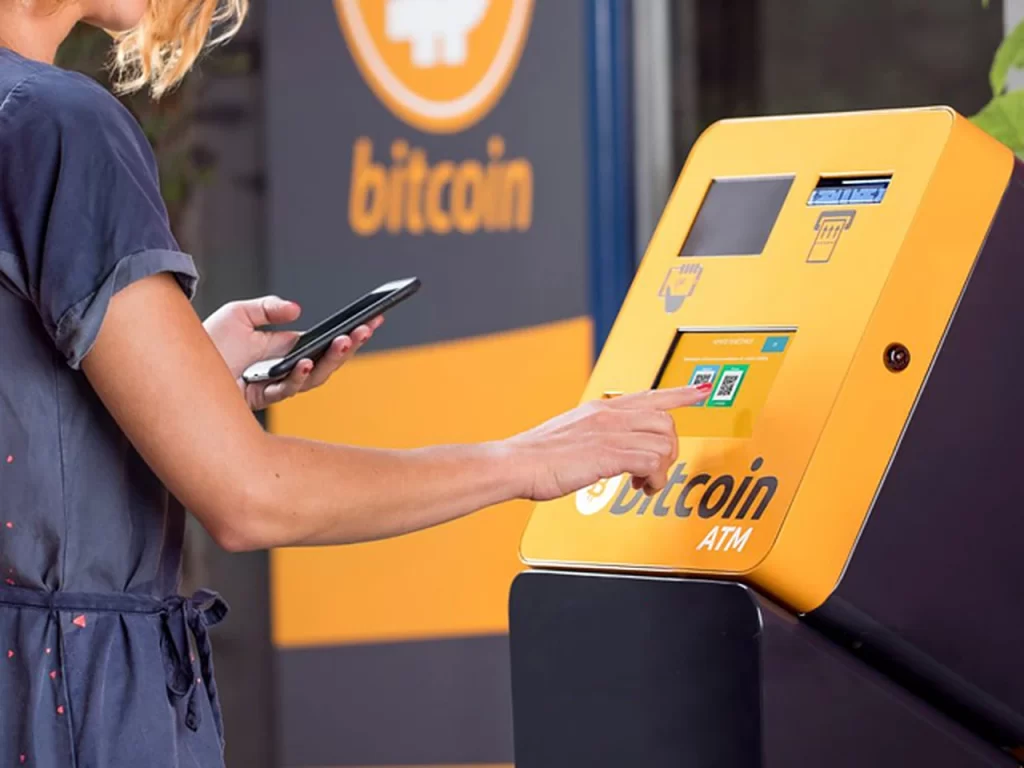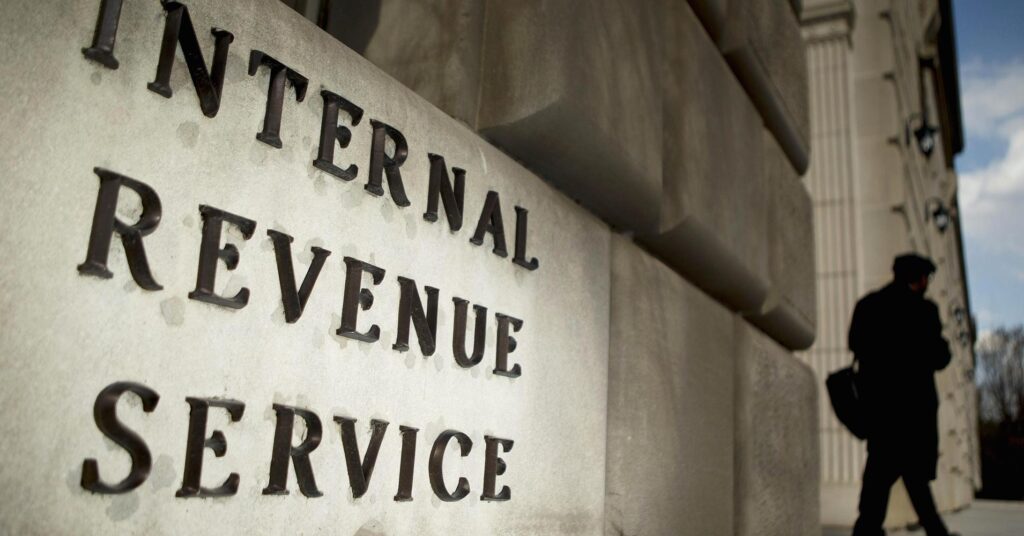The global presence of cryptocurrency ATMs has surged by 17.8% over the past year, reaching 38,279 units, approaching the previous peak of 39,541 set in December 2022.
According to Coin ATM Radar’s latest data for 2024, there have been 2,564 new installations, marking a notable turnaround from the net loss of 2,861 machines in 2023.
From July 2023 to May 2024, installations consistently rose, with June alone seeing a rebound of 377 machines after a slight dip of 115 in May.
Bitcoin Depot leads the market with 7,543 ATMs, followed by Coinflip with 5,057, and Athena Bitcoin with 2,756 units.
Bitcoin remains the dominant cryptocurrency transacted, alongside Bitcoin Cash, Ether, and Litecoin.
The United States hosts over 82% of all cryptocurrency ATMs globally, with Canada following at 7.7%.
READ MORE: Jamaal Bowman Loses Democratic Primary Amid Major PAC Opposition
Australia has shown remarkable growth, expanding nearly 17-fold to 1,107 machines over the past two years, positioning itself to potentially surpass Europe’s 1,584 ATMs.
Other significant countries in the cryptocurrency ATM market include Spain (313), Poland (279), El Salvador (215), Germany (177), and Hong Kong (169), with Romania, Georgia, Switzerland, Austria, and New Zealand each hosting over 100 ATMs.
Despite a decline in installations from December 2022 to July 2023, hitting a low of 32,764, the trend has reversed since then.
BitAccess, a prominent ATM manufacturer, saw its installations drop initially but has since rebounded with a net increase of 1,208 machines.
Overall, 72 countries among the 193 United Nations-recognized nations now feature cryptocurrency ATMs, underscoring the growing global adoption of digital currencies in everyday transactions.
To submit a crypto press release (PR), send an email to sales@cryptointelligence.co.uk.
Runes, a new token standard on the Bitcoin blockchain, has seen a drastic decline in its daily transaction volume, dropping by more than 88% from its peak in June.
According to data from Dune Analytics analyzed by Crypto Koryo, the average daily transactions for Runes from June 22–28 fell sharply to 37,820.
This marks a significant decrease of nearly 90% compared to the 331,040 daily average recorded between June 9–15.
On June 24 alone, there were 23,238 transactions, the lowest since Runes launched during Bitcoin’s fourth halving event on April 20.
Runes transactions have consistently represented between 4.9% and 11.1% of all Bitcoin transactions over the past week.
The sharp decline in Runes transactions has had a notable impact on Bitcoin miner fees, particularly in the aftermath of the recent halving event.
READ MORE: Bitdeer Secures 30-Year Lease for Ohio Mining Site, Plans Massive Power Expansion
Over the last six days, Runes have contributed less than 2 Bitcoin in miner fees, a stark drop from its record high of 884 Bitcoin on April 24.
In comparison, fees from Ordinals inscriptions and BRC-20 tokens have also been minimal during this period.
Initially seen as a promising new revenue stream for miners who traditionally relied on peer-to-peer Bitcoin transfers for network fees, both Runes and Ordinals managed to offset the 50% reduction in block subsidy immediately after the April 20 halving event.
However, since then, trading volumes have shown significant unpredictability.
Runes, introduced by Ordinals inventor Casey Rodarmor on April 20, was touted as a more efficient alternative to creating new tokens on the Bitcoin network compared to the BRC-20 standard and other solutions.
Yet, the decline in network fees coupled with Bitcoin’s price fluctuations has led to a decrease in Bitcoin’s hash price, a critical metric for measuring miner revenue, approaching its lowest level in history.
Meanwhile, Bitcoin miner reserves dropped to 1.90 million Bitcoin on June 19, the lowest in over 14 years when measured in Bitcoin terms.
To submit a crypto press release (PR), send an email to sales@cryptointelligence.co.uk.
Bitcoin‘s volatility surged on June 30, with traders anticipating significant price movements.
According to data from Cointelegraph Markets Pro and TradingView, BTC/USD reached highs of $61,668 on Bitstamp, rebounding from lows of $59,950 the previous day, dipping below the crucial $60,000 mark.
This volatility raised concerns about the support for BTC prices.
“With bids under spot price and the candle close imminent, $500M+ in bids were briefly placed and open interest rose,” noted Daan Crypto Trades on X, highlighting shifts in order book liquidity.
He predicted unusual weekend price action due to the quarter-end, foreseeing “interesting moves” typical of this period.
CoinGlass data indicated $60,583 as a pivotal liquidity level, with bids extending towards $59,500. Conversely, liquidity increased as prices exceeded $61,600 during the day.
Despite a weekly decline of 2.6%, Michaël van de Poppe, CEO of MNTrading, expressed optimism, anticipating a favorable weekly candle for Bitcoin.
“The correction seems relatively complete,” he remarked, drawing comparisons with past cycles.
Q2 performance remained lackluster, with Bitcoin down by 13.8% overall, primarily driven by an 8.9% loss in June.
READ MORE: Jamaal Bowman Loses Democratic Primary Amid Major PAC Opposition
Elsewhere, a prominent trader adjusted his BTC price predictions due to ongoing market sluggishness.
BitQuant, who previously forecasted Bitcoin hitting $95,000, admitted his predictions had not materialized as expected.
“I was wrong,” he conceded, reflecting on previous overestimations of Bitcoin’s peak prices.
Despite these setbacks, he affirmed his belief in Bitcoin’s long-term growth prospects.
In conclusion, Bitcoin’s recent volatility underscored uncertainties in the market, exacerbated by quarter-end dynamics.
Traders like Daan Crypto Trades and Michaël van de Poppe offered insights into shifting market dynamics and potential price movements, amidst broader reflections on Bitcoin’s performance and future prospects.
To submit a crypto press release (PR), send an email to sales@cryptointelligence.co.uk.
Dogecoin (DOGE) is attracting attention from analysts as its halving cycles and technical indicators hint at potential market movements.
Mikybull Crypto emphasized significant preparations for what may be the final surge in this cycle, supported by detailed chart analysis.
“The chart displays various periods marked by changing trend indicators, potentially linked to moving averages or other trend metrics,” noted Mikybull Crypto.
The highlighted “Halving Cycle” periods are pivotal in cryptocurrency contexts, representing a 50% reduction in mining rewards at set intervals, boosting a coin’s scarcity and value, which impacts market sentiment.
Technical annotations on the chart utilize Fibonacci extension tools to project future support and resistance levels based on historical price movements.
Key Fibonacci levels like 1.618 and -1.618, derived from past highs and lows, assist traders in identifying potential breakout points and consolidation patterns.
Crypto Daily Trade Signals echoed optimism, foreseeing a significant uptrend in Dogecoin’s price with a potential 430% increase from its current level.
READ MORE: Bitdeer Secures 30-Year Lease for Ohio Mining Site, Plans Massive Power Expansion
Data shows Dogecoin currently trades at $0.1237, reflecting a minor 1.42% decline over the last 24 hours and a 0.29% decrease over the past week, accompanied by a robust trading volume of $560,122,330.31, indicating sustained market interest.
The upcoming halving cycles and technical analyses imply a dynamic period ahead for Dogecoin.
As market dynamics evolve and anticipation mounts over potential price movements, investors and traders are closely monitoring these developments.
Attention remains fixed on how these factors will influence Dogecoin’s trajectory in the upcoming weeks.
Traders are advised to remain vigilant and observe key technical signals that could sway market sentiment and price action.
To submit a crypto press release (PR), send an email to sales@cryptointelligence.co.uk.
Retail investor Keith Gill, known online as Roaring Kitty, has a well-established reputation for his influential tweets that often impact GameStop (GME) shares and the GME-inspired Solana (SOL) memecoin.
Recently, Gill’s tweet had a broader effect, influencing not only GME shares but also various pet-themed memecoins and stocks.
On June 27, Gill posted a cryptic tweet featuring a cartoon image of a dog without any caption.
This simple tweet generated significant market excitement.
Following the tweet, the market capitalization of dog-themed memecoins surged to $36 billion, marking a 2.2% increase within 24 hours.
Cat-themed memecoins experienced an even larger jump of 16.2%, reaching a market cap of $2.4 billion.
In the stock market, pet-related companies like Chewy, Inc. and PetMed Express, Inc. saw substantial gains, although these were short-lived.
GameStop (GME) shares continued their rise, appreciating by 3.68% at the time of reporting.
Similarly, the GME memecoin surged by 14.57% in the past 24 hours.
Technical indicators, such as the Relative Strength Index (RSI), confirmed the bullish trend with values remaining above the neutral threshold on the 4-hour chart.
READ MORE: Spot Bitcoin ETFs See $31M Inflows, Reversing Seven-Day Outflows
Interestingly, despite the excitement around dog-themed memecoins, market leaders like Dogecoin (DOGE) and Shiba Inu (SHIB) only saw modest gains of 3.4% and 1.2%, respectively.
Conversely, top cat-themed memecoins, Mog Coin (MOG) and Michi (MICHI), experienced dramatic increases of 25.9% and 38.65%, respectively.
Further analysis from COINOTAG, using data from Santiment, indicated positive sentiment surrounding these four memecoins, as evidenced by their RSI trends.
Keith Gill’s social media activity continues to wield significant influence over both traditional stocks and the burgeoning world of memecoins.
With both dog-themed and cat-themed cryptocurrencies seeing substantial gains, investors are reminded of the volatile yet potentially lucrative nature of this market segment.
Moving forward, traders and investors will likely monitor Gill’s online presence closely, anticipating potential market shifts driven by his next tweet.
To submit a crypto press release (PR), send an email to sales@cryptointelligence.co.uk.
Floki Inu, a prominent memecoin project, has issued a stern warning to its community and the wider cryptocurrency sector regarding ongoing scams involving counterfeit tokens falsely linked to its brand.
These fraudulent tokens have emerged on the Solana and Base blockchains, deceiving unsuspecting investors.
In an official statement posted on social media, Floki Inu emphasized that its genuine token (FLOKI) is exclusively available on the BNB Smart Chain and Ethereum networks.
To safeguard users against scams, Floki Inu provided the correct contract addresses:
“0xcf0c122c6b73ff809c693db761e7baebe62b6a2e” for Ethereum and “0xfb5b838b6cfeedc2873ab27866079ac55363d37e” for BNB Smart Chain.
The project urged its community members to rely solely on official sources for token-related information to avoid falling prey to fraudulent schemes.
Despite these security challenges, Floki Inu remains committed to expanding its ecosystem’s functionalities.
A significant recent development includes the launch of the FLOKI Name Service on the BNB Chain mainnet.
READ MORE: Bitdeer Secures 30-Year Lease for Ohio Mining Site, Plans Massive Power Expansion
This service allows users to register decentralized domain names with the .floki extension, leveraging the Space ID architecture for compatibility with various decentralized applications (DApps), such as Trust Wallet and PancakeSwap.
Floki Inu’s growth on the BNB Chain has been notable, surpassing 417,400 holders. In celebration, the project initiated a rewards program enabling holders to claim interest rewards.
Looking forward, Floki Inu disclosed its ambitious 2024 roadmap, outlining plans for utility-focused initiatives.
These include the introduction of regulated digital banking accounts that facilitate the creation and funding of accounts using FLOKI tokens.
The project has also forged a partnership with a licensed fintech firm to enable digital bank accounts supporting Swift payments and SEPA IBAN capabilities across several countries, including Canada, Spain, Dominica, Australia, and the United Arab Emirates.
Earlier this year, the Hong Kong Securities and Futures Commission (SFC) cautioned the public against unauthorized schemes like the “Floki Staking Program” and “TokenFi Staking Program,” which promise high annualized returns without proper authorization for public sale in Hong Kong.
To submit a crypto press release (PR), send an email to sales@cryptointelligence.co.uk.
Bitdeer, a prominent Bitcoin mining company, has recently secured a 30-year leasing agreement with the Monroe County Port Authority for a site located at the Hannibal Industrial Park in Clarington, Ohio.
The site, formerly an aluminum factory, already possesses the essential power infrastructure necessary for Bitdeer’s mining operations, as per the company’s announcement.
Bitdeer plans to obtain up to 570 MW of additional power from this site in two phases.
The first phase aims to deliver 266 MW by Q3 2025, with the remaining 304 MW subject to approval by utility authorities.
This move underscores Bitdeer’s strategic expansion to enhance its operational capacity.
Analyst Mark Palmer previously expressed confidence in Bitdeer, highlighting the company’s industry-leading energy efficiency with an average cost of $0.04 per kilowatt hour.
This endorsement came amidst significant developments for Bitdeer, including a notable $150 million investment from stablecoin issuer Tether in May, which involved acquiring over 18 million shares with an option for an additional 5 million shares at $10 each.
Post the April 2024 halving event, concerns over miner profitability have intensified.
READ MORE: Potential U.S. Spot Solana ETFs Could Skyrocket SOL Price by Ninefold, GSR Markets Predicts
Research by Cantor Fitzgerald revealed that many Bitcoin mining firms may face challenges, with estimated mining costs ranging from $43,913 to $62,276 per BTC.
This analysis used a market price assumption of $40,000 as the threshold for profitability, a level not yet regained post-halving.
In Cantor Fitzgerald’s assessment, Argo Blockchain Mining emerged with the highest mining costs at $62,276 per Bitcoin, followed closely by Hut8 at $60,360 per coin.
The research underscores the financial pressures facing miners amidst rising energy costs and reduced block rewards, which now stand at 3.125 Bitcoin per block.
Bitdeer’s long-term lease and expansion plans in Ohio reflect its commitment to scaling operations despite industry challenges.
The move positions Bitdeer to capitalize on its efficient energy model and strategic investments, reaffirming its role as a key player in the evolving landscape of Bitcoin mining.
To submit a crypto press release (PR), send an email to sales@cryptointelligence.co.uk.
Jamaal Bowman, a House Representative for New York’s 16th Congressional District, has lost the Democratic primary, which could have allowed him to retain his seat in 2025.
According to a June 26 projection from NBC News, Democratic challenger George Latimer will defeat Rep. Bowman by roughly 58% to 42%, with 84% of the vote reported at the time of publication.
The Fairshake political action committee (PAC) spent more than $2 million on a media campaign opposing Bowman’s reelection, not for his voting record against pro-crypto bills, but for claims of “pushing dangerous conspiracy theories.”
During his time in Congress, Rep. Bowman voted against the Financial Innovation and Technology for the 21st Century (FIT21) Act, the CBDC Anti-Surveillance State Act, and a joint resolution overturning a Securities and Exchange Commission (SEC) rule on banks handling crypto.
Latimer, in contrast, has not made any notable statements on crypto or blockchain.
Bowman had the support of many members of his party.
However, interest groups, including Fairshake and the United Democracy Project — a PAC reportedly tied to the American Israel Public Affairs Committee — spent $17 million to oppose the Democratic incumbent.
Bowman has been openly critical of Israel following the nation’s military actions in Gaza.
Before the primary election, New York Representative Alexandria Ocasio-Cortez (AOC) called out Fairshake and the United Democracy Project for “dump[ing] nearly $15 million to unseat a member of Congress” as “corruption” and “a core threat to American democracy.”
On June 25, AOC won the Democratic primary for New York’s 14th Congressional District.
Gemini co-founder Tyler Winklevoss, who recently pledged $1 million to support Donald Trump in the 2024 presidential election, said on X on June 25 that “this is what happens when you pick a fight with the crypto army.”
His comments were likely alluding to Latimer’s primary victory.
READ MORE: Bitcoin and Ether Transaction Fees Plunge Amidst Crypto Market Turmoil
In Utah, John Curtis, a Representative for Utah’s 3rd Congressional District, won the June 25 Republican primary for the U.S. Senate. According to filings with the Federal Election Commission,
Fairshake’s affiliate PAC Defend American Jobs spent more than $3 million on media buys supporting Curtis and roughly $1.2 million to oppose challenger Trent Staggs.
While Staggs’ position on crypto is unclear, Rep. Curtis cosponsored the FIT21 Act and the CBDC Anti-Surveillance State Act and voted in favor of the joint resolution to overturn the SEC Staff Accounting Bulletin No. 121.
He also supported the SEC’s efforts to approve spot Bitcoin exchange-traded funds and said, “crypto has become a significant part” of the U.S. economy.
With roughly $169 million in its coffers contributed by crypto firms, including Coinbase and Ripple, Fairshake’s media campaigns may have already influenced U.S. voters.
In March, California Representative Katie Porter lost a primary race for the U.S. Senate after a Fairshake ad claimed she took campaign contributions from “big pharma, big oil, and the big bank executives.”
Protect Progress, another Fairshake affiliate, backed Democratic candidates Shomari Figures and Julie Johnson, who won their respective primaries in California and Texas.
To submit a crypto press release (PR), send an email to sales@cryptointelligence.co.uk.
After a week of net outflows, United States-based spot Bitcoin exchange-traded funds (ETFs) experienced a reversal on June 25, with net inflows reaching $31 million.
Data from SoSo Value reveals a shift from the past seven consecutive trading days, which saw $1.1 billion in total outflows from the spot Bitcoin ETFs.
On Tuesday, June 25, the Fidelity Wise Origin Bitcoin Fund (FBTC) led net inflows with $49 million, followed by the Bitwise Bitcoin ETF (BITB) with $15 million, and the VanEck Bitcoin Trust ETF (HODL) with net inflows of $4 million.
Conversely, the Grayscale Bitcoin Trust (GBTC) experienced net outflows of $30.3 million, and the ARK 21Shares Bitcoin ETF reported $6 million in net outflows.
However, BlackRock’s iShares Bitcoin Trust ETF (IBIT) — the largest fund by assets under management — saw no inflows on June 25.
The same was true for ETFs from Invesco Galaxy, Valkyrie, and Franklin Templeton.
As of June 25, the 11 spot Bitcoin funds that debuted in January have seen net inflows totaling $14.42 billion.
READ MORE: TON Blockchain Faces Rising Phishing Threats Amid Explosive 2024 Growth, Experts Warn
Recent outflows from U.S.-based spot Bitcoin ETFs have been the highest since April, when total net outflows exceeded $1.2 billion between April 24 and early May.
Despite these fluctuations, prospective U.S. issuers continue to finalize their registrations, following the approval of the ETFs by the U.S. Securities and Exchange Commission (SEC) in May.
Firms have been submitting amended Form S-1 registration statements as part of this process.
According to Bloomberg ETF analyst Eric Balchunas, spot Ether ETFs could potentially begin trading in the U.S. by July 2.
On June 25, investment manager VanEck filed a Form 8-A with the SEC for its spot Ether ETF, bringing it one step closer to launching.
The price of Bitcoin rose from $61,359 on June 25 to $61,732 at the time of publication, marking a 0.6% increase, according to TradingView data.
To submit a crypto press release (PR), send an email to sales@cryptointelligence.co.uk.
The IRS finalized its new crypto broker reporting requirements on June 28, delineating the affected industry participants while addressing widespread concerns.
Decentralized exchanges and self-custody wallets, pivotal components of the crypto ecosystem, were excluded from these rules.
The IRS clarified this exemption, acknowledging the complexities inherent in fully decentralized networks after reviewing extensive feedback.
However, the scope of the regulations encompasses stablecoins and tokenized real-world assets, treating them equivalently to other digital assets.
This decision underscores the IRS’s commitment to enhancing tax compliance across all sectors of the digital asset landscape.
IRS Commissioner Danny Werfel emphasized the necessity of these measures in combating potential tax evasion facilitated by digital assets:
“We need to make sure digital assets are not used to hide taxable income, and these final regulations will improve detection of noncompliance in the high-risk space of digital assets.
“Our research and experience demonstrate that third-party reporting improves compliance.”
READ MORE: Bitcoin Activity Hits Lowest Levels Since 2010 Amid Retail Investor Retreat
This sentiment aligns with earlier warnings from IRS criminal investigation chief Guy Ficco, who anticipated heightened crypto tax evasion in the upcoming tax season of 2024.
The IRS’s approach has sparked vigorous opposition from industry advocacy groups like The Blockchain Association and The Chamber of Digital Commerce.
These organizations have long contested the IRS’s broker reporting rules, arguing against their applicability to decentralized finance networks and highlighting significant compliance costs.
In 2023, The Blockchain Association voiced its objections, citing fundamental discrepancies between the IRS’s proposals and the operational realities of decentralized systems.
Recently, the association reiterated concerns over regulatory overreach and projected an annual compliance cost of $256 billion, arguing that the rules violated the Paperwork Reduction Act.
The Chamber of Commerce echoed these apprehensions, particularly regarding potential privacy infringements arising from the extensive documentation requirements, including the filing of billions of 1099-DA tax forms.
In summary, while the IRS has exempted certain decentralized entities from its new reporting rules, its comprehensive approach to digital asset taxation faces substantial resistance from industry stakeholders, who assert that these regulations impose undue burdens and threaten privacy rights.
To submit a crypto press release (PR), send an email to sales@cryptointelligence.co.uk.











